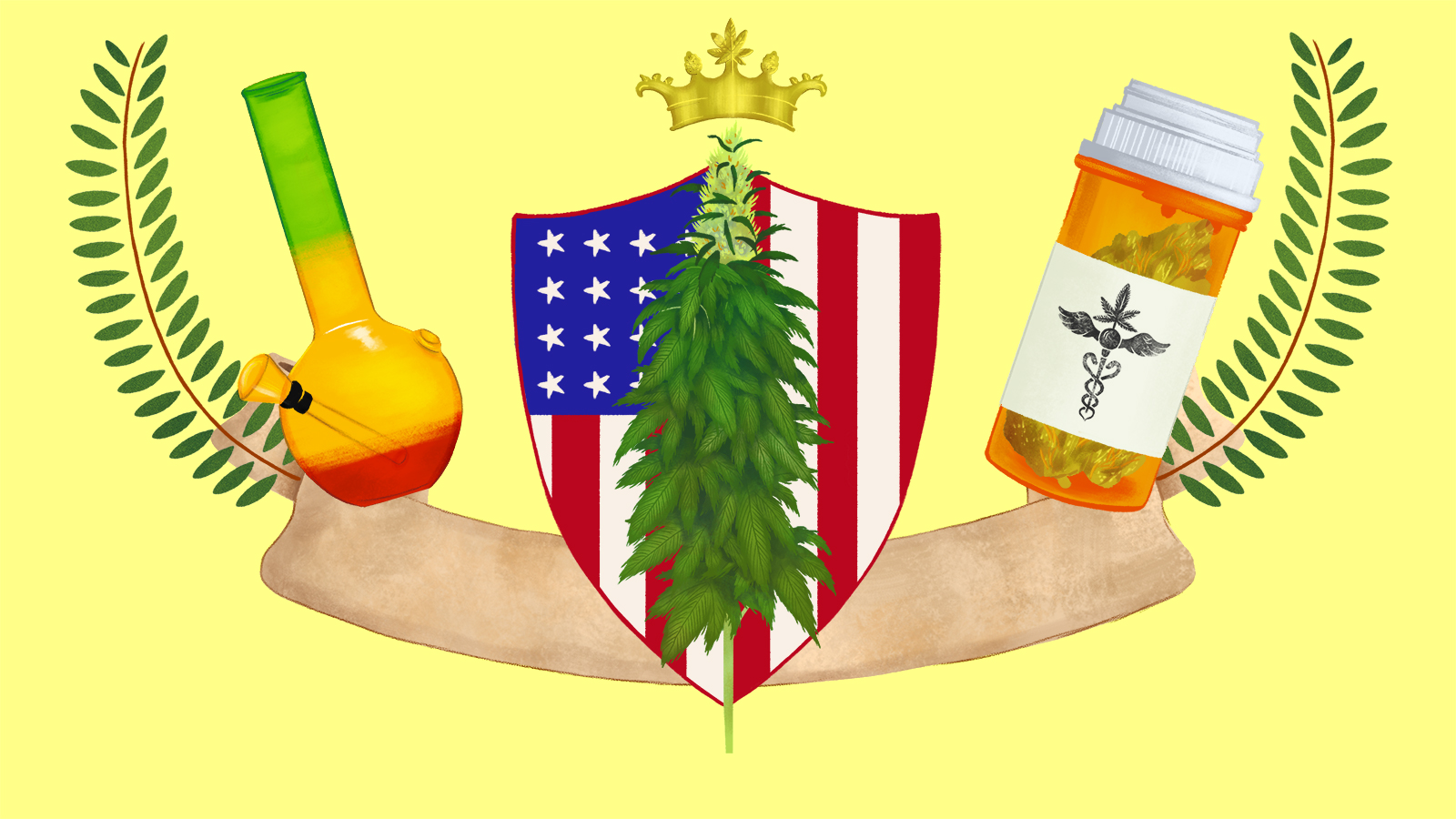First, a confession.
I, Catherine Ronan Herzog, 32 years old, a resident of Seattle, Wash., gainfully employed, and of (mostly) sound mind and body, am a marijuana smoker.
Because I live in one of the few states that permit recreational weed use, I should face no consequences for this public coming out. It’s legal. I can say it. I can also walk to my neighborhood pot shop, consult my local budtender, and leave with a pouch full of Washington-grown marijuana in my public radio tote bag. It’s as easy as buying a six-pack, although the shops tend to be more aromatic and the staff more red-eyed.
When you first visit a pot shop, after years of buying it in sandwich baggies from a guy who knows a guy, the experience is novel. Each time, I am struck by the people I encounter in line: grandmothers, soccer moms, software engineers on Solowheels, and lots and lots of yuppies — or, perhaps, yuspies: young, urban, stoned professionals. People with money.
And there is a lot of money in this new industry. In 2015, retail sales of marijuana topped $3.4 billion. For comparison, that’s more than the total sales of popular brands Dasani, DiGiorno, Girl Scout Cookies, Oreo, Blue Bell, Pringles, Blue Diamond, Nabisco Wheat Thins, and Twizzlers combined, as Vox recently pointed out.
The pot boom isn’t just good for munchie suppliers: It’s good for state coffers as well. Colorado buyers spent almost a billion dollars on legal weed in 2015, and the state took over $70 million in taxes that fiscal year. In Washington, sales of recreational pot in 2015 were roughly $330 million, and the state made nearly $133 million. Neighboring Oregon got off to healthy start with its recreational sales, netting $3.48 million in taxes in January.
Nationwide, revenue could skyrocket as more states go legal. Alaska is on track to open recreational shops this year, and Nevada, California, Vermont, and Arizona are all expected to go legal in 2016. And that’s just the beginning: ArcView Market Research predicts sales of legal cannabis will reach $21.8 billion by 2020.
There are more benefits than tax dollars. Those of us in legal states no longer face arrest for partaking. Legal marijuana is more regulated than the black market, so users know what we’re getting when we enter a licensed shop. We can find out where our weed is grown, if it’s organic, and how much THC (the psychoactive element in cannabis) we can expect to intake. This may be especially appealing to the newbie or the oldie — someone like my friend in Tacoma who smoked weed in the ’60s, gave it up for decades, and now gets cannabis mints from a licensed shop in his town. My friend says it’s cured his insomnia, and his wife agrees: There’s less tossing and turning in the night. They both win.
But all is not perfect in the legal marijuana market, and that’s part of why Grist decided to explore legal marijuana and its effects — not the effects on the brain and body, but the effects on society, on cities, on the market, and on the planet. Right in time for stoner holiday 4/20, we present High and Mighty, a series about the booming industry.
Grist senior fellow Clayton Aldern will explain the environmental footprint of marijuana, staff writer Heather Smith will look at organic pot farming, and Seattle writer Sara Bernard will dive deep into gentrification and legal weed. We’ll have some fun, too: our advice columnist Umbra Fisk will answer your cannabis questions, and I’ll visit industrial edible operations to see how pot brownies get made on a mass scale. And I do mean mass. If you’ve never seen an industrial marijuana grow, I recommend making friends with a pot grower. Just be sure to bring your sunglasses.
As we celebrate 4/20, it’s important to remember that not everyone wins when weed goes legal. As Buzzfeed reported last month, the vast majority of those profiting off legalization are white. Even in states where pot is now legal, there are still people in prison for prior convictions — most of whom are people of color. If you were a pot grower or dealer before legalization and have a prior conviction, there’s no place in the market for you, either. And commercial marijuana is one of the most energy-intensive crops in the country, requiring indoor lighting, ventilation, and air-conditioning systems that suck up vast amounts of energy. According to a 2012 study, indoor marijuana-growing operations produce 15 million tons of greenhouse gas emissions per year. That’s equivalent to the emissions of 3 million cars. And that’s before states started going legal.
These are all complicated issues, and they will become even more so as states increasingly decide to legalize. We’ll explore all of them and more this week on Grist. So sit back, stayed tuned, and — if you’re so inclined — spark one if you’ve got one.
Welcome to High and Mighty.



